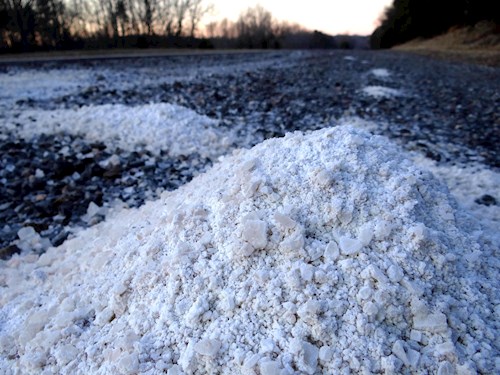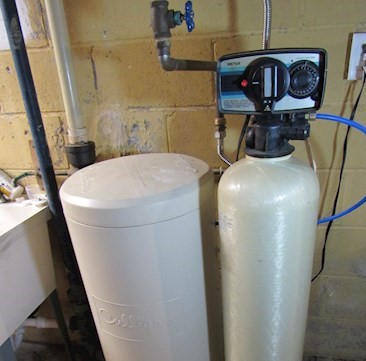Sources of Salt
Across Wisconsin and much of the United States, waterways are becoming increasingly salty due to road salt, water softeners, dust suppressants, and fertilizers. We are salting our freshwater. Elevated salt levels threaten our fisheries, tourism, economy, quality of life, and the health of our aquatic ecosystems.
Where does the salt come from?
The salt entering our water comes from four main sources:
Road Salt:
- One of the most common ways that salt enters our water is from winter salt use on roads, parking lots, and sidewalks.
- Chloride concentration levels peak in the winter and spring due to the road salt that enters the water.
- Road salt has been used as a deicer in Wisconsin since the late 1950s. It was cheap, and it got the job done. But, unfortunately, all the salt we put down doesn't just go away.
- Today, Salt Wise Municipal Champions are adopting best management practices to save money, protect public safety, and conserve freshwater.
Water Softeners:
- Water softeners use special resin beads to help remove hard water minerals such as magnesium and calcium before the water is used in our homes.
- When water enters the softener, the resin beads attract and trap the hard water minerals like a magnet.
- Because the resin bead can only capture so many minerals, the softener periodically flushes them with salt water (brine) to remove the minerals from the resin and recharge the system.
-This water goes to a wastewater treatment plant where the salt passes through the system and enters into local rivers and streams, or through a septic system and into groundwater.
- Is your water softener Salt Wise? Take this 5-minute self-assessment.
Dust suppressants:
- It's less commonly known that salt (calcium chloride) is applied to gravel roads during warmer months.
- These salts are used to suppress dust on gravel roads by trapping moisture.
- In Wisconsin, due to our legacy as a dairy state, gravel roads are not very common and therefore this is not a major source of chloride in our water.
Fertilizers:
- Some potassium fertilizers contain chloride (KCl).
- The state of Minnesota estimates that fertilizer use accounts for 23% of the chloride applied in MN each year. Wisconsin does not have a total chloride budget.


